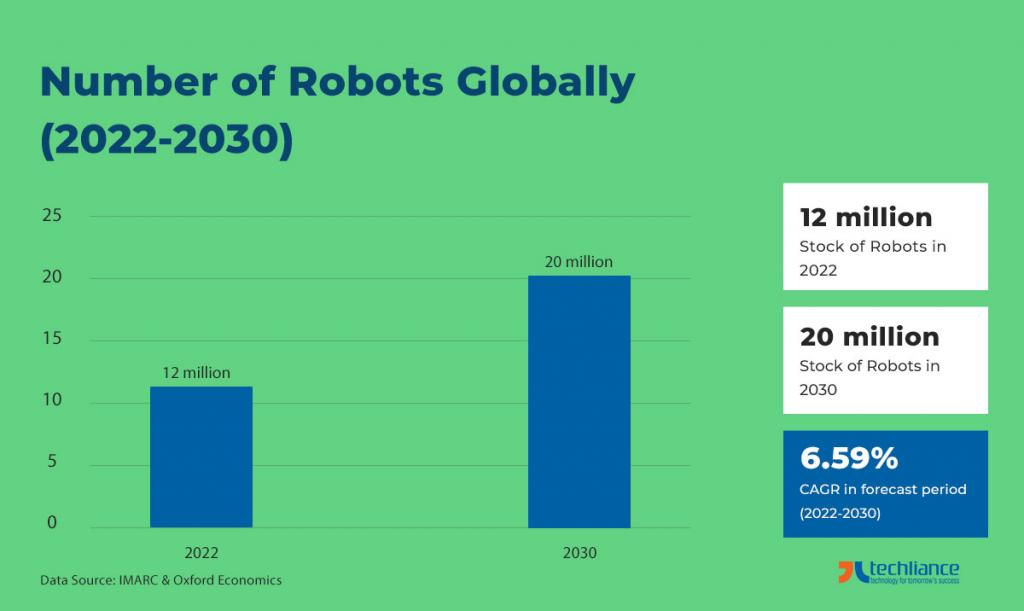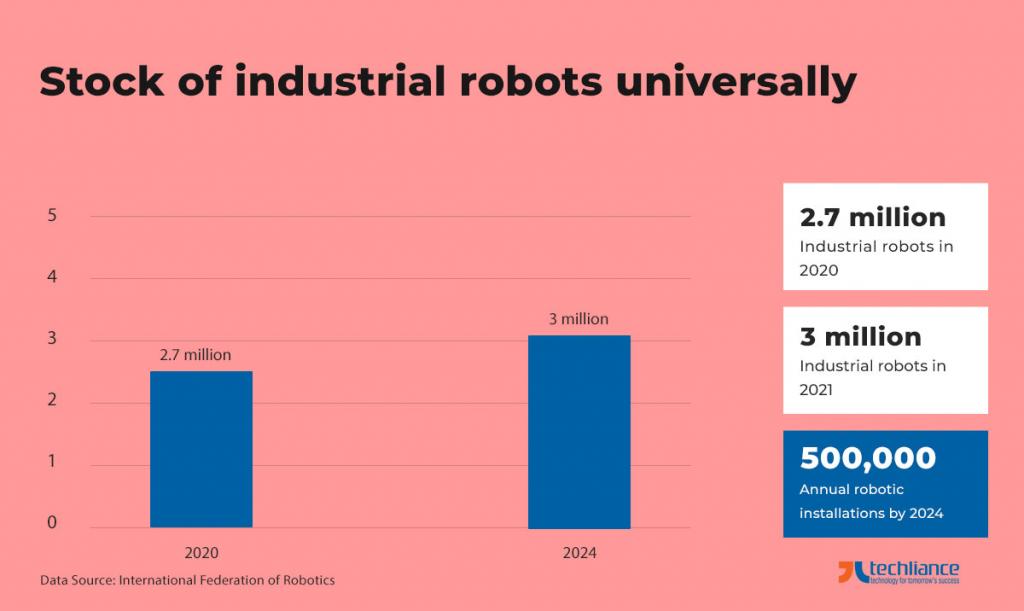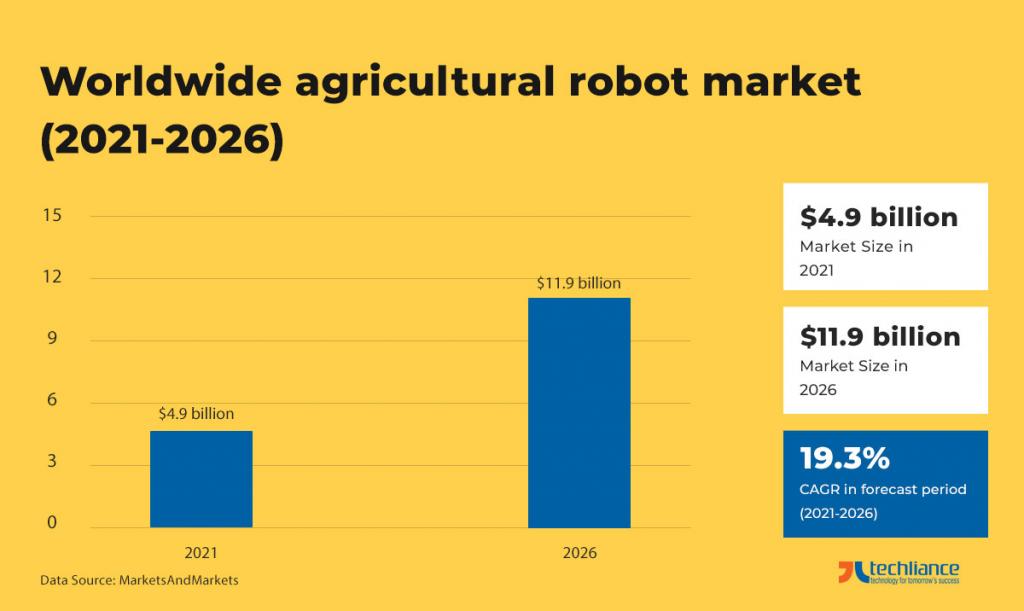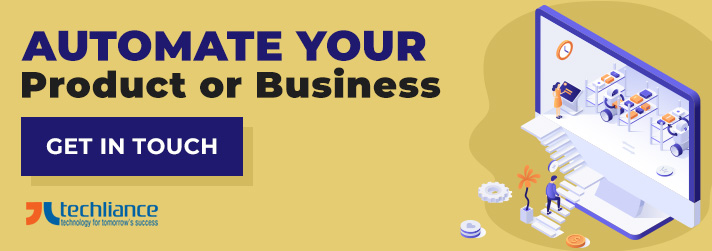Today, robotics and jobs are a match that is realistic, futuristic, and at times problematic. AI and ML are serving as the backbone of robotics globally and in the US during 2024. So, we are entering the era of robots working side-by-side with humans and making independent decisions.
Remember what watching sci-fi movies felt like? Whenever we talk about robots, we consider them to turn against humanity one day. Take the example of the world-famous franchise of Terminator movies.
Many businesses are employing robotics to automate numerous tasks. Certainly, it improves their productivity as robots can perform tedious tasks without break. Dedicated IT experts can use the latest technologies to power robots that are helpful for mankind and business.
People have concerns about robotics and jobs that the increasing deployment of robots will take away their careers. This is indeed a scary insight but does this truly reflect badly on humans? Look around you, and let’s take a deep dive together to address this topic.

Automation with robots is the norm in the business
Over a decade or so, automation is turning out as the norm worldwide and in the United States. The business world is warmly implementing business process automation (BPA) and robotic process automation (RPA). Especially, the retail and shipping industries are employing both these forms of process automation.
Not only does it save time but it helps stakeholders remain updated, and part of the process without any delay. Take the example of Amazon — probably a household name when it comes to online shopping and delivery. In 2012, Amazon bought Kiva systems (a robotics company) that produce autonomous mobile robots (AMRs) for moving goods to shelves.
Now, imagine the power of completely automating the placement of goods in big warehouses without any intervention. It’s a beautiful flow to watch where machines work tirelessly without any shifts or breaks. Robots do this task of moving inventory (mostly heavy products/goods) without any challenges.
FedEx also went the AMR way back in 2018 through another company. And more companies are following this trend. Machines run by AI/ML smartly maneuver goods of any weight and manage warehouse operations with minimal supervision from humans.
Automation, or should we say the use of robotics will continue to prevail. Consider the example of drone delivery that companies such as Verity are conveniently using. These drones are even able to scan barcodes for inventory management.
A report by IMARC suggests the number of robots globally at 12 million in 2022. Whereas, a study by Oxford Economics guesses the global stock of robots to balloon to 20 million by 2030. Taking into account these researches, we will see a CAGR of 6.59% in the forecast period of 2022 to 2030.

Business use cases of robotics and their impact on jobs
Here are some use cases that highlight the importance of robotics and jobs for businesses and people in 2024.
- Automating medical care
- Making robots intelligent with AI
- Embracing new ways of farming
- Cooking you a delight
- Entertaining you with machines
- Strengthening defense mechanisms

Next, we briefly look into these example cases that demonstrate that robotics and jobs can go along.
Automating medical care
The field of healthcare can greatly benefit from robotics as disease diagnosis, surgery and operations require immense precision. Machines can function in speculative mode to assess the condition and operate accordingly. So, it can reduce risks that can prove a vital element for rehabilitation, therapy, and mental health.
The study by Growth+Reports anticipates the universal medical robots market to reach $31.8 billion by 2031. Whereas, in 2020 it had an estimated value of $6.1 billion. This means a CAGR of 16.2% in the forecast period of 2021 to 2031.
A handful of companies that are leading robotic surgery technology are Medtronic, Microbot, Mazor, myOmnicell, and Intuitive Surgical. The British National Health Service (NHS) is successfully conducting robot-assisted surgeries. Similarly, doctors fixed a child’s leaky heart valve with a robotic catheter at Boston Children’s Hospital in Massachusetts.
In today’s world, the COVID-19 pandemic has made social distancing a necessity. So, remote presence robots are even aiding patients through online health appointments and checkups. Worries about robotics and jobs don’t hold in medical care, as robots are assisting and not relacing doctors.

Making robots intelligent with AI
Robots “think” better when they have a larger set of data for evaluating their decisions. This makes decision-making capability a whole lot better for the machines. Does this sound familiar to the concept of ML and AI?
If yes, then it’s about having a data center, analytics, and storage to allow machines to make independent sound decisions. Hence, the concept of Robots as a service (RaaS) emerged and now it’s cloud-based. This makes it easier for any kind of company (small or large) to simulate robotics in their processes and products.
Amazon’s AWS RoboMaker is a specific cloud-based platform for machine learning, monitoring, and analytics for robot manufacturers. Not to stay behind, Google has launched its Cloud Robotics Platform. Microsft moved along the same lines with its Intelligent Robotics as well.
Robotics technology is all about finding smart ways of creating built-in vision systems. Moreover, these systems normally require no coding. Additionally, the machines learn their appropriate behavior through AI/ML.
According to a McKinsey prediction, 30% of jobs would be automated by the 2030s. Venture capitalist Kai-Fu Lee told CBS News that AI will replace 40% of jobs within 15 to 20 years. World Economic Forum expects that technology, AI, and robots will displace 85 million jobs. But the same research forecasts that these technologies will generate 97 million new jobs by 2025.
The International Federation of Robotics disclosed that 2.7 million industrial robots are working in factories globally by 2020. While they found this figure to increase to 3 million in 2021. By 2024, they expect the number of units installed per year globally to reach 500,000.

Embracing new ways of farming
The agriculture and livestock industries can greatly benefit from AI, drone technology, and 5G. Several robots are helping in arable farming and pastoral farming. For example, automated harvesting systems, driverless tractors, and milking robots.
Farms are no longer quiet places untouched by technology where you can hear bees buzzing and cattle grazing away. In reality, mass farming becomes a distinct possibility through robotics that helps accelerate human efforts. Farmers can perform the simplest of features through robotics such as planting, crop seeding, monitoring, fertilization, and even irrigation.
A report by MarketsAndMarkets valued the worldwide agricultural robot market was $4.9 billion in 2021. This study projects this market to grow to $11.9 billion by 2026. This denotes a CAGR of 19.3% for the forecast period of 2021 to 2026.

Cooking you a delight
Recall that cooking is an art. As they say, great food is made through love, attention, and care. But then maybe not, because now robots can and will be used for even preparing your meal.
As e-commerce has become mainstream, the food industry has not been left behind. So, restaurants are showcasing their menu online and are willing to serve consumers through online delivery platforms. Furthermore, it is no surprise that robotics is handling the bulk production of food.
Such robots are placed on various stations to ensure that the cooked food is precisely prepared. A company by the name of Moley Robotics is already marketing its robots to prepare Michelin Star-level food for customers. So, be ready to send compliments to your robot chef very soon.
Entertaining you with machines
This one is quite hard to believe, right? But think about it, a lot of sophisticated toys and gadgets are in a way machines or robots. Presently, you see a huge influx of personal AI assistants, robotic communications, smart hubs, music players, and security systems.
There are so many interactive experiences that all point to one thing only — entertainment. Our human minds are always looking for or rather seeking ways to remain happy. Accordingly, our robot friends are keeping up with our demands.
On a broader level, robotics will be used in many entertainment avenues. For instance, amusement parks, festivals, and other entertaining events. A lot of aiding technologies such as AI/ML and AR/VR will also help robots grow in this area.
Strengthening defense mechanisms
The geopolitical landscape is another aspect where you can use robotics in combat. Already, robots are operating fighter aircraft, submarines, and ships. But imagine a whole set of robot armies ensuring national security, while also keeping the lives of soldiers safe.
In highly critical war zones, sending out army personnel to rescue or help out people can endanger more human lives. Although, military officers take pride in defending their country by putting their lives at stake, saving them is very important. Robots can perform many tasks like intelligence, surveillance, reconnaissance, search and rescue, combat support, mine clearance, explosive ordnance, and firefighting.
The road ahead for robotics, businesses, and careers
Realize that the future of business is probably about completely automating processes from end to end. Reflect on the example of ordering online through an app for some medicines. The system assigns the order to a robot at the distribution center to pick up and pack your medications.
Subsequently, the package is given to a delivery rider robot who arrives at your doorstep for handing out the medicines. The only human in this entire process is the initiator — you. Whereas, the robots complete the rest of the process in the true sense of automation.
The question is not about whether robots are taking over or not. The better question to address is when exactly is the robotic invasion happening? In 5 to 10 years ahead, the existing capabilities of robotics will be significantly improved.
Particularly, now that drones and machines are becoming an important aspect of retail and eCommerce. We as humans are also looking for sophisticated experiences. So, Web 3, AR/VR, and metaverse are becoming indelible concepts that we all will be eventually embracing.
This makes it a natural progression towards interactive ways of buying, selling, and communicating. Even, we are doing our daily routine of work without thinking twice about the ways businesses are servicing us. The concepts of swarm thinking, collaborative robots, and cloud computing are emerging as the guiding lights for a brighter future.

Concluding remarks
Don’t imagine a world where robots are against humans. Let’s not get ahead of ourselves. In the current state, machines/robots are making a very positive contribution in many areas across businesses.
As per a recent survey by PwC, AI and robotics will end around 7 million jobs from 2017 to 2037. That’s a long span of 20 years. Does not it sound dismal?
But then let’s present another fact to help you feel slightly good about the future. The cost of reduction through the use of this technology would generate 7.2 million new jobs. That’s 20,000 more careers to help the economy.
Don’t think that robots are taking over jobs. Let’s have a subtle approach to understand how they are uplifting us to think beyond the limits. We agree that manual and laborious jobs are at risk.
This frightens us that technology and robotics are eliminating a certain set of jobs. On the other hand, we are also enabling human beings to be in a higher position for greater potential. As we evolve businesses through technology, it’s also time that we evolved ourselves for the better.
The robots/machines have to learn the concept of natural thinking, while we come with common sense by default. We are the masters holding the reign to an incredible source of technology. Thus, robotics can help us solve our daily problems by augmenting thinking with higher productivity.
Let’s embrace this marvelous robotic evolution instead of fearing it. Because robots are our allies rather than enemies. Industries will grow and continue their progress, helping us all with an elevated lifestyle.
Are you looking for ways to automate your product or business? Techliance is a click/tap away from your journey to an automated solution. Contact us today to get set go.




